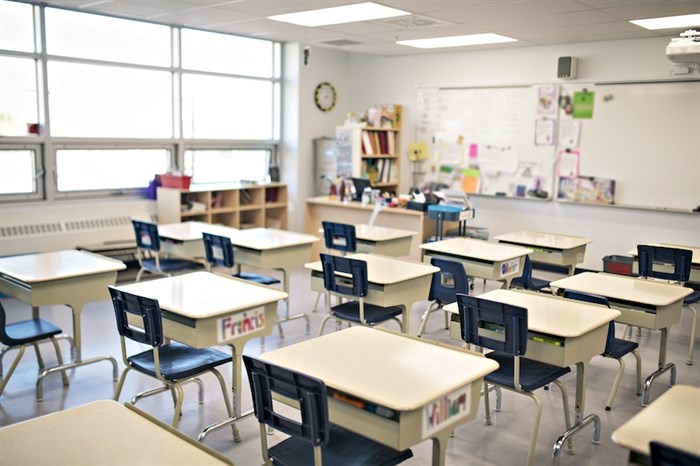
Image Credit: ADOBE STOCK
April 01, 2020 - 12:35 PM
Classroom learning will return as of Monday for the children of about 550 Central Okanagan families with Tier 1 essential service workers.
Tier 1 essential service workers include healthcare workers, police and firefighters, who have to stay at their jobs during the COVID-19 pandemic. Those who require childcare were asked to reach out to the school district last Thursday to identify their needs and the district has come up with a plan, accordingly.
"For those students who are being looked after on-site by teachers, we would limit the number of students in the classroom to six," Kevin Kardaal, Central Okanagan Public Schools superintendent, said Tuesday.
Locations of where learning will happen have yet to be announced but Kaardal said the district will provide work stations that are socially and physically apart, and providing education differently.
After Tier 1 families have a system in place, schools will also be opened to the children of Tier 2 essential service workers, including grocery store employees, truckers, utility workers and warehouse workers, then Tier 3 essential service workers will be factored in.
While some go back to class learning for the bulk of the 23,000 students enrolled in the Kelowna-area K-12 system will be taking their lessons from home, although the district wanted to be clear about one thing: “This is not homeschooling”.
“I think we have to be realistic here — it won’t be the same,” Moyra Baxter, the Central Okanagan school district chairperson said.
“Our district motto was ‘together we learn’ and I never knew what that meant until the last two weeks when things day-by-day changed… It’s an anxious time for everyone and I think, of course, our students continuing education is of the utmost importance and they may miss somethings they would receive under normal times. But we all know these aren’t normal times. We don’t go home, close the door and stay home all the time — it’s a different time.”
For all its differences, however, Kardaal stressed that some things were the same.
“Parents are not expected to teach their children,” Kaardal said.
That work will be done through the school district in some manner.
In the most extreme cases, a connection will be made with students through phone or with paper based support but technology is going to be a key piece of what’s needed going forward. Already teachers have canvassed the families of their students to find out what technology is available.
Those who don’t have access to the internet or a tablet of some sort could also see some changes. Internet service for low-income families will also be made free through both Telus and Shaw.
Many connections will likely be made through Zoom, an easy-to-use video-conferencing and collaboration platform.
The Ministry of Education announced today it secured and funded licences for the application Zoom for all K-12 public and independent schools in B.C.
To ensure safety and privacy for students, the licensing agreement complies with B.C.'s Freedom of Information and Protection of Privacy Act. School technology administrators can control permissions and privileges, while disabling features that are unnecessary or inappropriate.
Students will be given a unique website address, so they can access their virtual classroom without needing an individual account. The Zoom server will be based in Canada, with added encryption so it is a safe platform to learn.
To contact a reporter for this story, email Kathy Michaels or call 250-718-0428 or email the editor. You can also submit photos, videos or news tips to the newsroom and be entered to win a monthly prize draw.
We welcome your comments and opinions on our stories but play nice. We won't censor or delete comments unless they contain off-topic statements or links, unnecessary vulgarity, false facts, spam or obviously fake profiles. If you have any concerns about what you see in comments, email the editor in the link above.
News from © iNFOnews, 2020